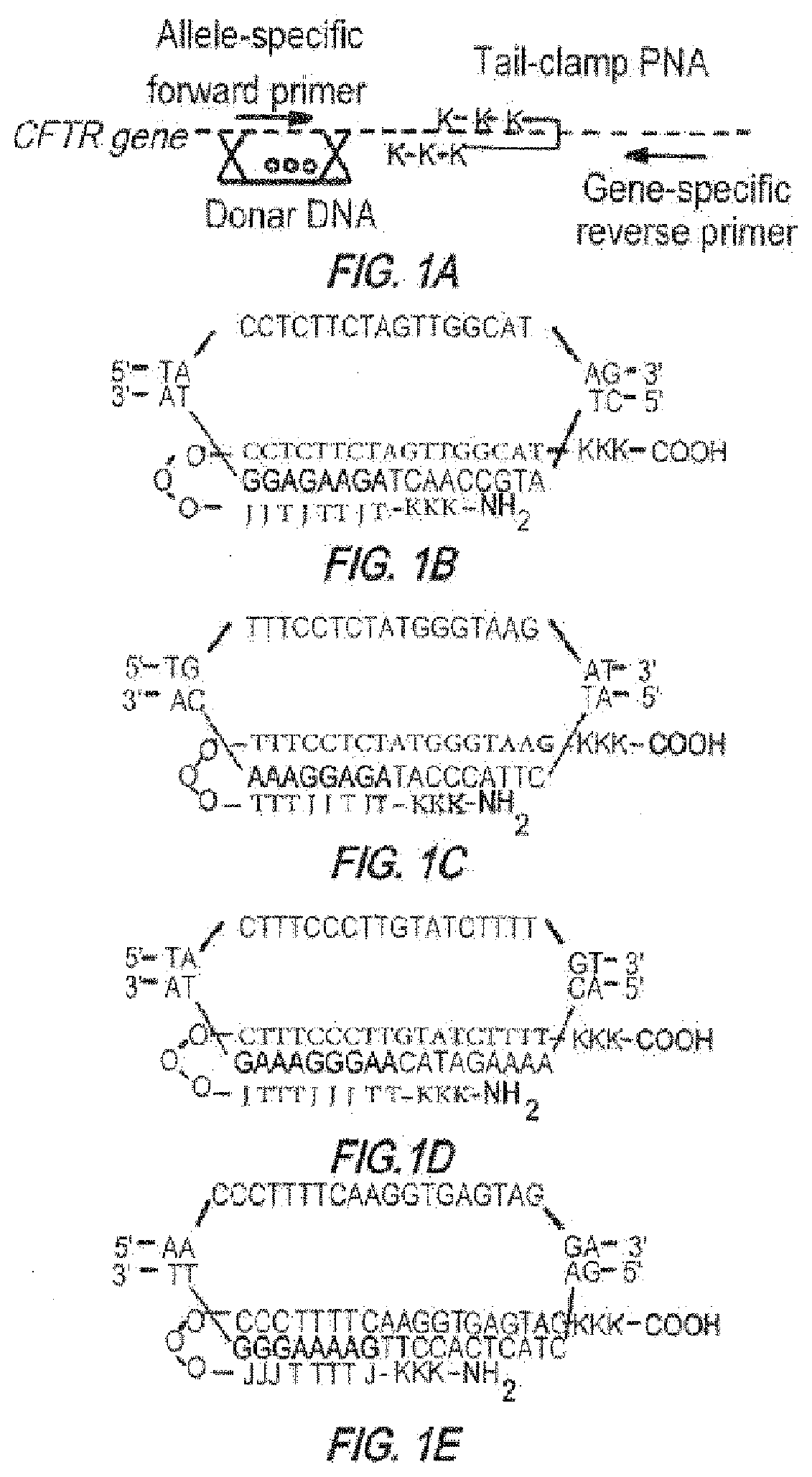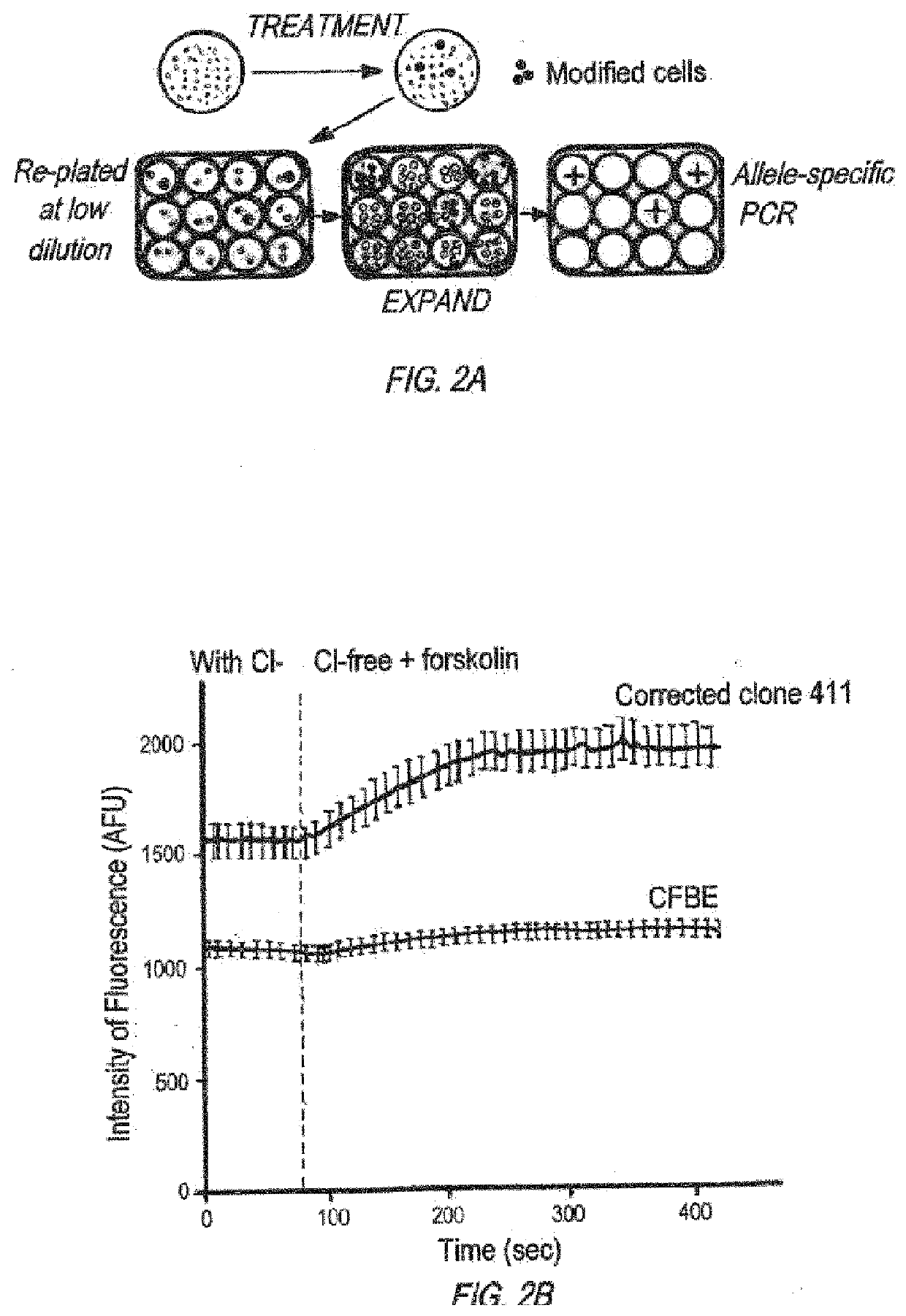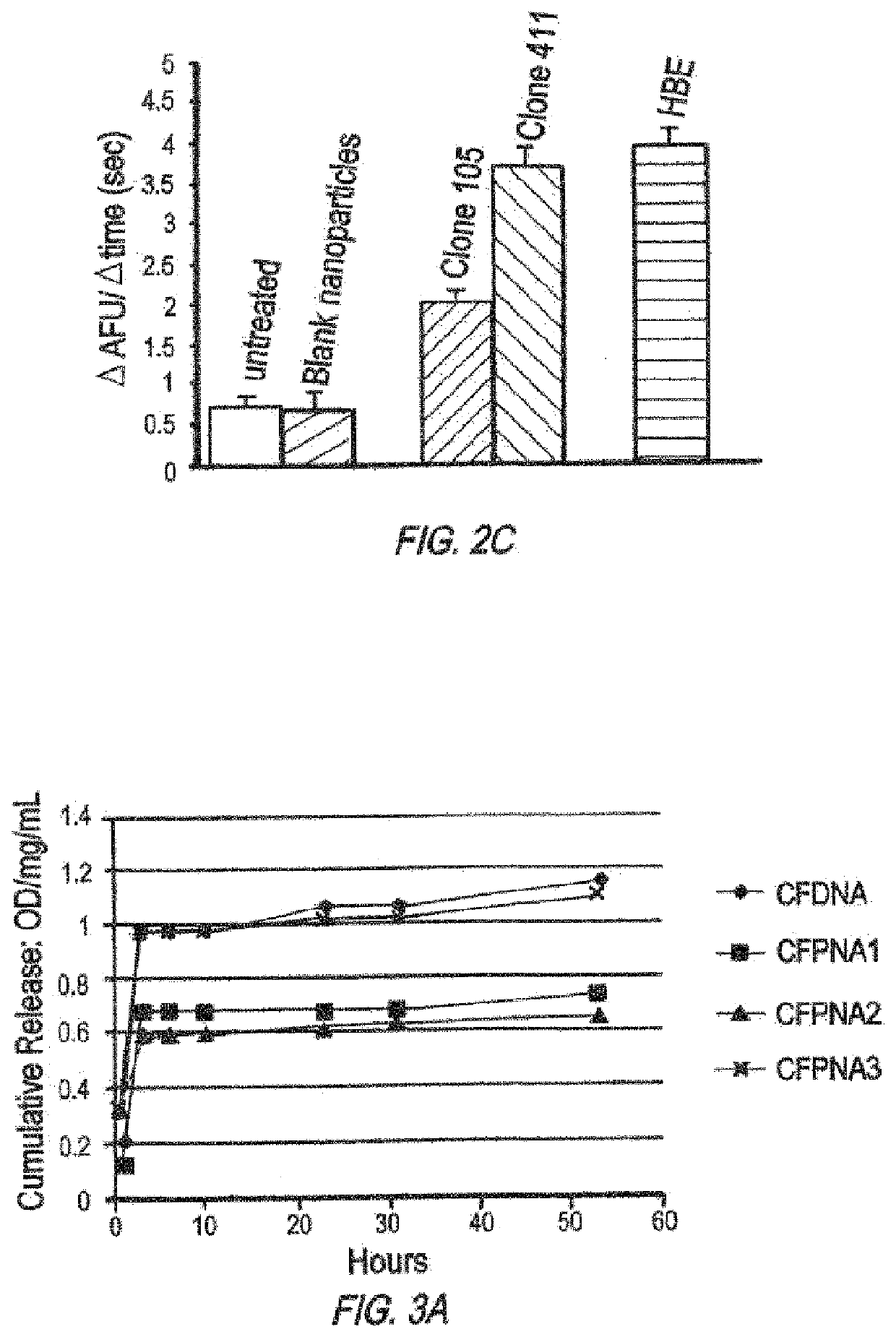Compositions and methods for treatment of cystic fibrosis
a technology of cystic fibrosis and compositions, applied in the field of triplex formation molecules, can solve the problems of not being readily amenable to gene therapy, and achieve the effect of improving one or more symptoms of cystic fibrosis
- Summary
- Abstract
- Description
- Claims
- Application Information
AI Technical Summary
Benefits of technology
Problems solved by technology
Method used
Image
Examples
example 1
orming PNA Molecules can Modify F508del CFTR
Materials and Methods
[0538]Oligonucleotides
[0539]PNAs with an 8-amino-2,6-dioxaoctanoic acid linker were purchased from Bio-Synthesis (Lewisville Tex.) or Panagene (Daejeon, Korea) and purified by HPLC. Donor oligonucleotides 50 nt in length were synthesized by Midland Certified Reagent (Midland Tex.), 5′- and 3′-end protected by three phosphorothioate internucleoside linkages at each end and purified by reversed phase-HPLC. Sequences of PNA molecules used are given in FIGS. 1A-1E.
Human donor DNA sequence:(SEQ ID NO: 96)5′ TTCTGTATCTATATTCATCATAGGAAACACCAAAGATAATGTTCTCCTTAATGGTGCCAGG 3′Mouse donor DNA sequence:(SEQ ID NO: 169)5′ TCTTATATCTGTACTCATCATAGGAAACACCAAAGATAATGTTCTCCTTGATAGTACCCGG 3′
[0540]In the mismatched PNA control experiments, a PNA molecule targeting the human β-globin gene was used with 12 mismatches in the Watson Crick domain relative to the CF PNA2:
β-globin-targeted PNA(SEQ ID NO: 33)JTTTJTTTJTJT-OOO-TCTCTTTCTTTCAGGGCA-CFT...
example 2
Gene is Modified in Isolated Clones
Materials and Methods
[0558]RNA Extraction and Reverse-Transcription AS-PCR
[0559]RNAeasy Plus Qiagen Kit (Gaithersburg, Md.) was used to extract RNA, and Invitrogen superscript III kit (Carlsbody, Calif.) was used to make cDNA. PCR reactions contained cDNA, 20% Betaine, 0.2 mM dNTPs, Advantage 2 Polymerase Mix, 0.2 μM of each primer, and 2% platinum taq.
Gene-specific reverse primer:(SEQ ID NO: 170)5′ CCTAGTTTTGTTAGCCATCAGTTTACAGAC 3′F508DEL CF primer:(SEQ ID NO: 171)5′ GCCTGGCACCATTAAAGAAAATATCATTGG 3′Primer for corrected / donor:(SEQ ID NO: 66)5′ CCTGGCACCATTAAGGAGAACATTATCTT 3′
[0560]PCR cycler conditions were as follows: 95° C. 5 min, [95° C. 30 sec 65° C. 1 min 72° C. 1 min]×35, 72° C. 5 min, hold at 4° C.
[0561]Deep Sequencing
[0562]Genomic DNA was isolated from treated cells or mouse tissue, and PCR reactions performed with high fidelity TAQ polymerase. Each PCR tube consisted of 28.2 μL dH2O, 5 μL 10× HiFi Buffer, 3 μL 50 mM MgCl2, 1 μL DNTP, 1 μL...
example 3
/ MPG Nanoparticles have Improved In Vivo Activity
Materials and Methods
[0570]Nanoparticle Formulation and Characterization
[0571]Poly(beta amino ester) (PBAE) was synthesized by a Michael addition reaction of 1,4-butanediol diacrylate (Alfa Aesar Organics, Ward Hill, Mass.) and 4,4′-trimethylenedipiperidine (Sigma, Milwaukee, Wis.) as previously reported (Akinc, et al., Bioconjug Chem., 14:979-988 (2003)). DSPE-PEG(2000)-maleimide was purchased from Avanti Polar Lipids (Alabaster, Ala.). MPG peptides were purchased from Keck (Yale University). CPPs were covalently linked to DSPE-PEG-maleimide as previously reported (Fields, et al., J Control Release (2012)), PLGA / PBAE particles contained 15% PBAE (wt %), and solvent from these particles was evaporated overnight in PVA instead of for three hours as above. To make surface-modified particles, DSPE-PEG-MPG was added to the 5.0% PVA solution during formation of the second emulsion at a 5 nmol / mg ligand-to-polymer ratio.
[0572]In subsequent ...
PUM
| Property | Measurement | Unit |
|---|---|---|
| wt % | aaaaa | aaaaa |
| wt % | aaaaa | aaaaa |
| diameters | aaaaa | aaaaa |
Abstract
Description
Claims
Application Information
 Login to View More
Login to View More - R&D
- Intellectual Property
- Life Sciences
- Materials
- Tech Scout
- Unparalleled Data Quality
- Higher Quality Content
- 60% Fewer Hallucinations
Browse by: Latest US Patents, China's latest patents, Technical Efficacy Thesaurus, Application Domain, Technology Topic, Popular Technical Reports.
© 2025 PatSnap. All rights reserved.Legal|Privacy policy|Modern Slavery Act Transparency Statement|Sitemap|About US| Contact US: help@patsnap.com



